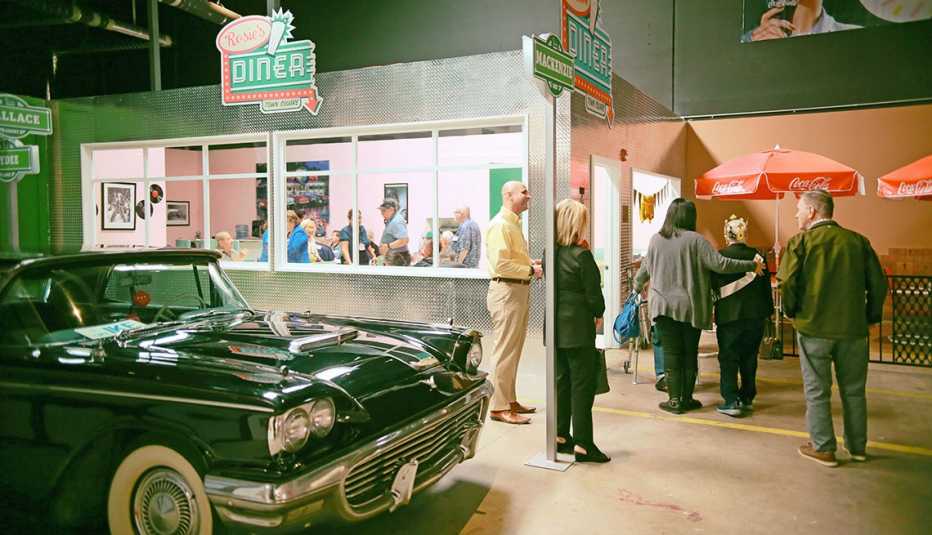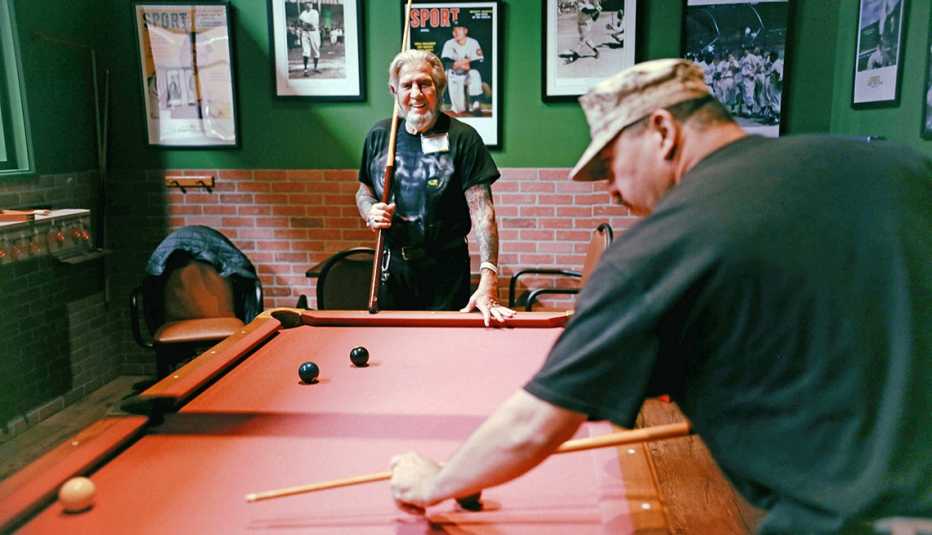Staying Fit


Mary Patterson bounds through the entryway of Glenner Town Square with a giant smile. Since Mary’s shoulder surgery in 2014, she hasn’t been the same. She forgets anything five minutes after you tell her, says her husband, Ray. Normally sweet and even-keeled, Mary, 87, is now “like two people” — one the woman he’s loved for most of his life, and the other an angry, sad and lost soul who sometimes fails to recognize her husband.


“It’s hard. Very hard,” says Ray, 81, who cares for Mary full time. But since Glenner Town Square, a state-of-the-art dementia day care facility, opened in August, Patterson says he’s been able to take care of the bills again, read books, breathe. And when Mary comes home from Glenner, she is in a better mood and easier to be with. “She doesn’t have her memory back,” he says. “But there’s a difference.”


AARP Membership— $12 for your first year when you sign up for Automatic Renewal
Get instant access to members-only products and hundreds of discounts, a free second membership, and a subscription to AARP the Magazine.
Located in an industrial building along a nondescript boulevard in Chula Vista, Calif., just south of San Diego, Glenner Town Square is a 9,000-square-foot indoor rendition of small-town USA, where Eisenhower is still president, Buddy Holly sings over the PA system and old movies like Rear Window play in 15-minute clips in the movie theater. An American flag with 48 stars flies outside city hall, near the shiny black 1959 Ford Thunderbird and across from Rosie’s Diner, where pictures of Elvis, Audrey Hepburn and James Dean hang from walls the color of cotton candy.
A growing form of care
The creators of Glenner Town Square hope to revolutionize dementia care through the use of reminiscence therapy, a palliative treatment for patients who have cognitive decline but whose long-term memory remains at least somewhat intact. Glenner Town Square is designed to capture the years between 1953 and 1961, when the average dementia patient was between ages 10 and 30 — the time of life during which, research indicates, many of our strongest memories are formed. Senior Helpers, a national organization that provides Glenner’s trained caregivers, is working with George G. Glenner Alzheimer’s Family Centers to create another Town Square outside Baltimore. The goal is to build 100 more Town Squares nationwide by 2021.
Each of the 14 storefronts within the Town Square represents an iconic place that participants might have visited in their past — the library, the bar, the barbershop, even the opera house. Guests are guided from one nostalgic scene to another in groups of five, staying in each for about 45 minutes, not unlike a high school schedule. Aides play cards with them, help them paint, tell stories and, in one particularly poignant moment recently, had them copy inspiring messages on Halloween cards for sick children at a nearby hospital, and sign them with “I love you.”


































































More From AARP
The Next Wave of Brain Research
The Dementia Discovery Fund has already invested in 16 companies seeking new approachesWhat Is Dementia?
It’s an umbrella term for a loss of memory and thinking skills that has various causes, symptoms and treatmentsDementia Resource Guide
For individuals and families